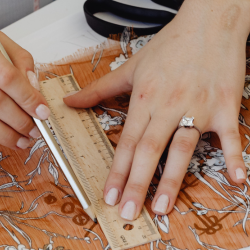Every storyteller has to be able to write dialogue that is engaging, credible, and dynamic. But what makes for excellent dialogue? Excellent dialogue advances either the story or your understanding of the characters, or both, without becoming monotonous. The qualities of a good writer can be identified when the dialogues put an impact.
Dialogue may help you build your characters and move your narrative ahead. Dialogue may assist you to create the background and provide narrative points that the audience may not be aware of. The tone can also be set through dialogue. You may create a mood for each scene by utilising the dialogue that people share. Keep in mind that there is tension in both what is said and, particularly, what is not spoken.
Table of Contents
The Following Requirements Should Be Met by all Dialogue:
It must advance the plot. The reader must be one step closer to either the climax or the resolution of your tale after each discussion or exchange.
It must include pertinent details about the character. The reader will get an understanding of the character’s feelings and driving forces through the dialogue the author chooses.
It must make the reader more aware of how the characters are related to one another.
It is a waste of words if your dialogue doesn’t achieve all of the aforementioned goals.
Let’s now explore the greatest dialogue writing techniques for your story.
Best Tips for Dialogue Writing
Mentioned below are some screenwriting dialogue tips that you should follow:
Keep it Brief
There shouldn’t be endless pages of dialogue. If that occurs, you ought to probably write a play rather than a novel. The finest conversations are concise. It’s not the entire pie; it’s just a cut. There is a crucial fact about the people, their goals, and how they see the world that can be learned without having extensive conversations between them.
Additionally, with the reader going back and forth between people, a discussion that goes on for too long might start to feel like a game of tennis. The reader may become tired of listening to long dialogue. Reduce the amount of conversation the characters need to exchange to a minimum.
Skip the small conversation
Never ever squander conversation in your story with trivial talk. Small chat fills up awkward silences in real life, but in the universe of your novel, you should only use conversation that contributes to the character’s or the plot’s development. Work on characterisation and scene description to convey that your character dislikes uncomfortable pauses. Show the character’s discomfort by explaining how she taps her fingers on the windowpane or lets out a series of harsh sighs rather than utilising mind-numbingly extended exchanges.
A conversational filler might lessen the impact of your scenario. Instead, avoid small talk entirely and choose conversations that perfectly capture the moment.
Avoid info–dumping
An info dump is a lot of information that is presented all at once and is left up to the reader to make sense of.
The conversation may be used to reveal much about your character, you shouldn’t utilise it to flood the reader with details. If you want to info dump, avoid doing it in conversation. Information overload causes discourse to bog down. It sounds strange. In addition, it offends the reader.
Show consistency
Keep in mind to keep your characters true to themselves. Speaking in a modest and self-conscious manner won’t always make one confident and sarcastic. Your character should always be genuine to themselves when speaking. The reader should be able to determine who is speaking even without character tags.
Build Suspense
It’s common for people to conceal their true thoughts and emotions. People often omit important details, and your story’s characters are no exception. You must take into account the fact that most individuals tend to leave a lot of things unspoken in order to develop a genuine relationship between your characters.
But that doesn’t exclude the reader from being aware of what is being expressed but not said. The reader wants a conclusion that doesn’t quite materialise, so as a writer, you may develop the moment, reveal the characters’ ambitions and motives before the scene, and then let it play out.
Find a unique way for your character to speak
Each character will have their own manner of speaking and expressing their ideas, much like every other person you know. Some folks use more intentional force. Some people are more sluggish and passive. Without droning on, you can respect these diverse approaches. The best approach is to concentrate on word selection.
For instance, use terms with only one syllable or that are spoken quickly, such as “yeah,” to convey someone’s tendency to be a bit stern or abrupt. But if you were searching for the right words to describe an endearing character, you could choose more elegant language, such as “of course.”
Conclusion
Many people are attempting to explore this field as a potential profession. There are several offline and online institutions that provide training in scriptwriting, dialogue writing, filmmaking, etc. You may begin by pursuing screenwriting courses, screenplay writing courses, and many other courses and diplomas that are linked to the same if you are interested and believe you have what it takes to be a great dialogue writer.
Do your research about the institute before enrolling in any courses.













